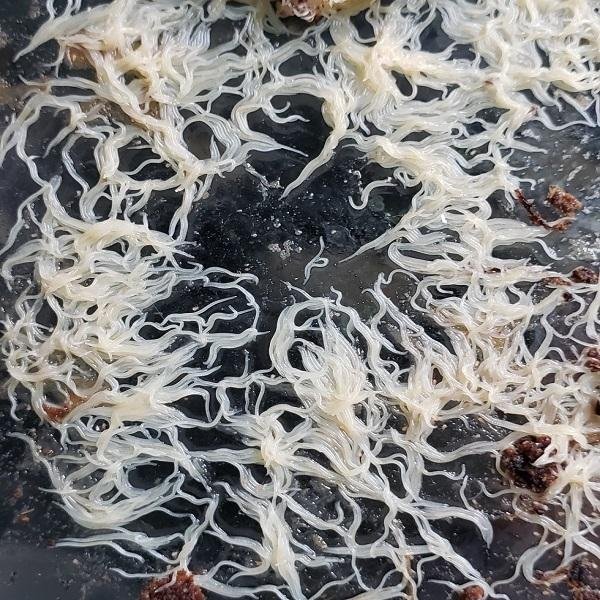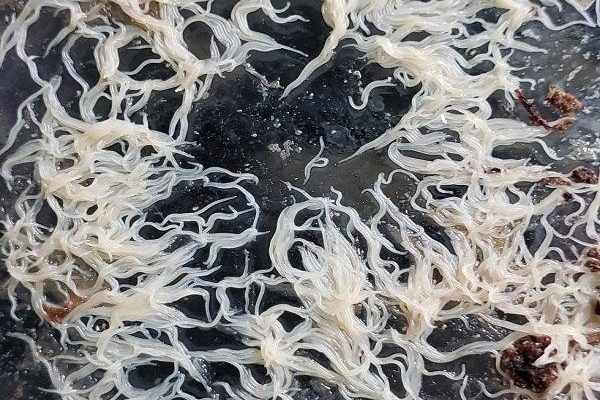
Imagine grindal worms as the unsung heroes of the live food world. They’re like the little engine that could, multiplying quickly and offering a nutritious snack. But how do they reproduce? What’s the scoop on their eggs and larvae? Let’s dive into the world of grindal worm reproduction—trust me, it’s more interesting than it sounds!
The Basics of Grindal Worms
Grindal worms, scientifically known as *Enchytraeus buchholzi*, are small white worms that thrive in moist environments, making them excellent for feeding fish and other small pets. These worms typically grow to about 2-3 centimeters in length and have a soft, segmented body. They enjoy decomposing organic matter and are often found in compost, which is great for our gardening friends.
What makes grindal worms particularly interesting is their reproduction method. Unlike many species that rely on laying eggs in specific conditions, these worms are quite versatile. They reproduce through a process called *asexual fragmentation*, where parts of their bodies can regenerate into new worms. This means they can quickly increase their population, making them an ideal choice for anyone looking to cultivate live food.
Plus, their easy care and rapid growth make them a winner in the world of home-based worm farming. Just picture a little container full of these wriggly munchers, thriving and reproducing before your eyes!
How Grindal Worms Mate
Mating in grindal worms is quite unique and a bit more complex than it might first appear. These worms are hermaphroditic, meaning each individual has both male and female reproductive organs. This gives them plenty of opportunities to find a partner and mate!
When they’re ready to reproduce, grindal worms will perform a little dance, wriggling and intertwining their bodies. This can be a pretty intriguing sight if you’ve got a culture going at home. You might be wondering why they do this—well, this mating ritual helps them exchange sperm, which is crucial for fertilization.
Once paired up, they’ll fertilize their eggs internally. Here’s the thing: they can store sperm for a while, which means they don’t have to mate every time they lay eggs. This ability can lead to a population explosion if conditions are just right!
Grindal Worm Eggs: What You Need to Know
After mating, female grindal worms will lay their eggs in the substrate where they live. Each egg is tiny, usually around 0.5 millimeters, and can be easily overlooked if you’re not looking closely. Depending on environmental conditions—like temperature and moisture—these eggs can hatch anywhere from a few days to a couple of weeks.
Each female can lay hundreds of eggs at a time, significantly boosting their population. The eggs are relatively durable and will stick to the substrate or any organic matter around them. If you’re raising grindal worms at home, maintaining a moist environment will help ensure that these eggs develop properly.
When you notice the eggs, you might want to provide them with optimal conditions to ensure a high hatch rate. A little warmth and moisture go a long way in nurturing these future worms!
The Lifecycle of Grindal Worms
Once the grindal worm eggs hatch, the little larvae are tiny and often transparent, making them hard to spot. They’re quite delicate at this stage, needing a safe environment to grow into mature worms. As the larvae start eating and growing, they’ll gradually become more visible and begin to resemble miniature versions of adult worms.
Typically, grindal worms reach maturity in about 2-4 weeks under the right conditions. This rapid growth means your population can swell quickly, so be prepared! If you’re on a feeding schedule for your pets, it’s a good idea to keep harvesting them regularly to prevent overcrowding, which can lead to competition for food and resources.
During their lifecycle, grindal worms continuously reproduce. This relentless cycle means that even if you start with a small amount, you can have a thriving culture in no time!
Maintaining a Healthy Grindal Worm Culture
If you’re thinking about starting your own grindal worm culture, here’s what you need to keep in mind! First, choose a container that allows proper airflow while retaining moisture. Something like a shallow plastic container can work wonders. You’ll want to fill it with a mix of organic material—think potting soil or coconut coir—as this provides a perfect habitat where they can thrive.
Watering your culture is crucial. Keep the substrate moist but not soaked; too much water can drown them and lead to mold. Ideally, you want to create a mini ecosystem where the worms can live comfortably. Also, remember to provide them with a regular source of food. You can use decomposing vegetable scraps, oats, or even specialized worm food.
Monitoring temperature is also essential. Grindal worms prefer a cozy environment, ideally around 70°F to 75°F (21°C to 24°C). If temperatures drop too low, their growth and reproduction can slow down significantly.
Benefits of Using Grindal Worms as Food
Using grindal worms as live food has several benefits for pet owners. Firstly, they’re highly nutritious, which makes them a fantastic option for fish and other small animals. The protein content in grindal worms is excellent for promoting growth and health in pets.
Secondly, they’re easy to cultivate at home, making them a practical choice for enthusiasts. You won’t need to run to the store each time you need live food. Just dig into your worm culture and harvest as needed! This not only saves money but ensures that your pets get fresh food regularly.
Lastly, grindal worms can also contribute to natural behaviors in pets. Fish, for instance, love to hunt for their food, and offering live worms can stimulate their instinctual feeding practices. This is great for keeping them active and engaged!
Grindal worm reproduction and their lifecycle offer fascinating insights into the world of these often-overlooked creatures. They showcase how efficient nature can be, multiplying rapidly in suitable conditions to provide a nutrient-rich food source for various pets. Whether you’re looking to culture them for fish or other small animals, understanding their mating, egg-laying, and growth processes can help you maintain a healthy environment.
So, if you’re ready to dive into the world of grindal worm farming, keep this guide in mind! You’ll be amazed at how quickly these little worms can populate and provide for your pets, all while being easy to care for and maintain. Happy worm farming!

